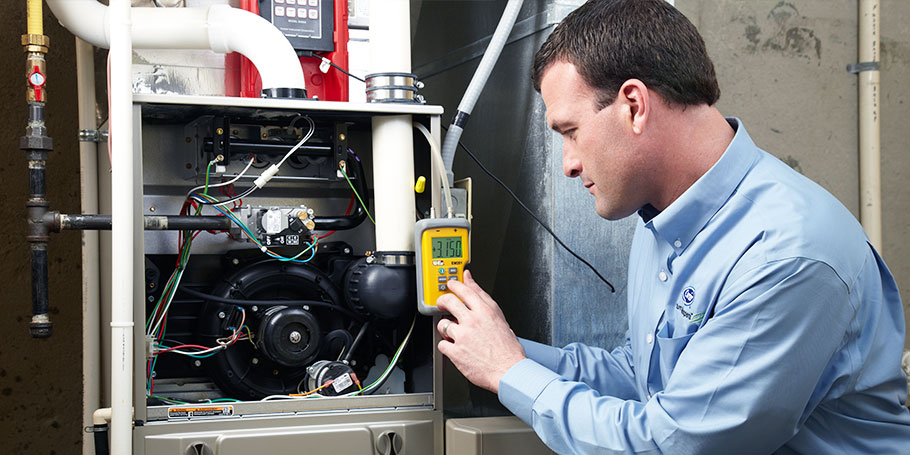Heating Repair Service Dallas TX A malfunctioning thermostat can lead to temperature inconsistencies, excessive energy consumption, and overall heating system inefficiency.

Here’s a detailed guide on how to diagnose and fix common issues with a malfunctioning thermostat:
1. Identify the Problem:
- Before attempting any repairs, it’s crucial to identify the specific issue with your thermostat. Common problems include inaccurate temperature readings, unresponsive controls, short cycling, or failure to maintain the desired temperature.
2. Check Power Supply:
- Ensure that the thermostat is receiving power. Check the circuit breaker or fuse box to confirm that the circuit supplying power to the thermostat is not tripped or the fuse is intact. If the thermostat is battery-operated, replace the batteries and ensure they are inserted correctly.
3. Clean and Calibrate:
- Dust and debris accumulation can interfere with the thermostat’s sensors and affect its accuracy. Use a soft brush or compressed air to clean the thermostat’s interior and exterior components, including the temperature sensor. If the thermostat is programmable, ensure that it’s correctly calibrated according to the manufacturer’s instructions.
4. Level the Thermostat:
- A thermostat that is not level can lead to inaccurate temperature readings and improper operation. Use a bubble level to ensure that the thermostat is mounted horizontally on the wall. Adjust the mounting screws if necessary to achieve a level position.
5. Check Wiring Connections:
- Inspect the wiring connections between the thermostat and the heating system. Loose or corroded connections can cause intermittent operation or complete failure of the thermostat. Turn off the power to the heating system before inspecting the wiring and tighten any loose connections using a screwdriver.
6. Test the Temperature Sensor:
- Use a digital thermometer to compare the temperature reading displayed on the thermostat with the actual room temperature. Place the thermometer next to the thermostat and wait for a few minutes to allow the temperature to stabilize. If there is a significant discrepancy between the thermostat’s reading and the thermometer’s reading, the temperature sensor may be faulty and require replacement.
7. Replace the Thermostat:
- If troubleshooting steps fail to resolve the issue, it may be necessary to replace the thermostat entirely. Choose a thermostat that is compatible with your heating system and meets your comfort and energy-saving requirements. Follow the manufacturer’s instructions for installation and programming.
8. Upgrade to a Smart Thermostat:
- Consider upgrading to a smart thermostat for improved energy efficiency and convenience. Smart thermostats offer advanced features such as programmable schedules, remote access via smartphone apps, and energy usage monitoring. Follow the manufacturer’s instructions for installation, setup, and integration with your heating system.
9. Professional Assistance:
- If you’re unsure about diagnosing or fixing thermostat issues, or if the problem persists after attempting repairs, it’s best to seek professional assistance from a licensed HVAC technician. A qualified technician can accurately diagnose the problem, perform repairs or replacements as needed, and ensure proper operation of your heating system.
Conclusion:
- Heating Repair Service Dallas TX If in doubt or if the problem persists, don’t hesitate to contact a qualified HVAC technician for professional assistance.
Jenny Beauty Supply Super Center
4343 Gannon Ln #100, Dallas, TX 75237, United States
1-972-283-9000
https://maps.app.goo.gl/DVvHkpZhjENGoZK37